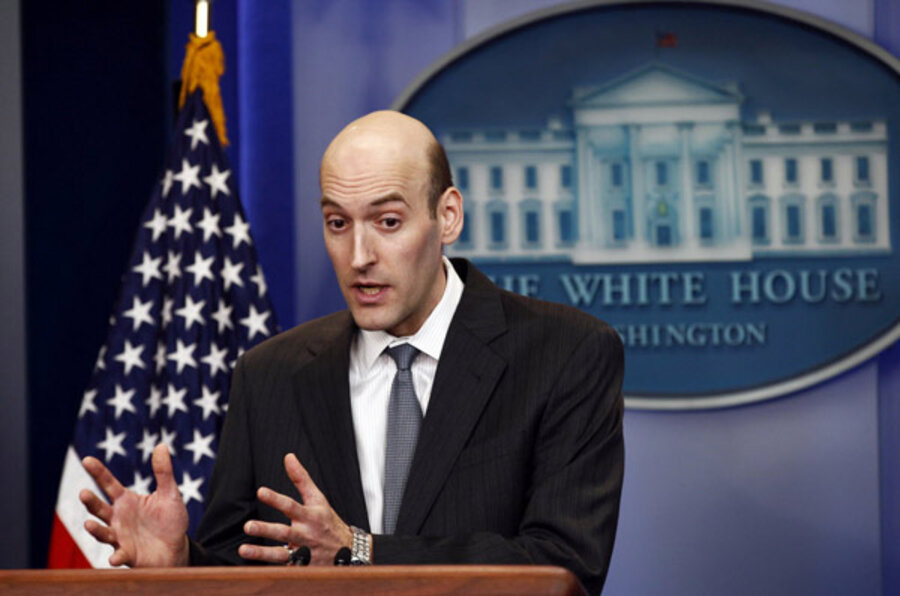Nuclear safety review: how US plants could handle a Fukushima-type event
Loading...
A major post-Fukushima Daiichi review of US nuclear power facilities is calling for sweeping changes to shore up safety, including ensuring that nuclear operators can handle multiple reactor emergencies at a single site.
But a Fukushima-type accident "is unlikely to occur in the United States," and continued nuclear plant activities "do not pose an imminent risk" to public safety, concluded the 90-day task force convened by the Nuclear Regulatory Commission (NRC). The task force released its report Wednesday.
Still, the task force offered a dozen major recommendations, one of which involves clarifying the NRC's own regulations. The recommendations also include requiring that US nuclear plants:
• Reevaluate and upgrade their "design basis" or planned-for capability to protect reactors and their safety systems from earthquakes and floods.
• Strengthen reactor operators’ capacity to deal with station blackout (SBO) situations by requiring at least eight hours of on-site power, and equipment to keep the reactor core and spent-fuel pool cool for at least 72 hours overall, while off-site emergency resources are accessed. Some US nuclear plants today have as little as four hours of backup battery power available.
• Update facility safety plans to be able to deal not only with prolonged station blackouts, but also multiple-reactor emergencies.
• Add new instrumentation and seismically protected systems that could provide additional cooling water to spent-fuel pools if necessary.
• Have reliable, hardened vent designs for boiling-water reactors with Mark I (the Fukushima design) and Mark II containments. Currently, 23 US plants have designs similar to the Fukushima plant and employ a variety of systems with differing capabilities.
The task force also advised the five-member NRC to issue a number of orders, including that nuclear plant operators conduct training exercises for handling “a multiunit event” and provide backup power capability for cooling spent fuel.
A major shortcoming in NRC regulations, the task force wrote, involved how plant operators are required to deal with station blackouts due to major disasters.
"The implementing guidance for SBO focuses on high winds and heavy snowfalls in assessing potential external causes of loss of offsite power, but does not consider the likelihood of loss of offsite power from other causes such as earthquakes and flooding," the report says.
The task force’s recommendations will be considered in a formal hearing on July 19 and will be part of a longer-term review, says Gregory Jaczko, NRC chairman.
“I am proud of the diligence and dedication of the Task Force and look forward to working with my fellow commissioners to respond to these recommendations,” he said in a statement.
Nuclear industry officials, however, appeared to push back on the task force’s recommendations, suggesting that the longer-term review now under way would incorporate more definitive information about the Fukushima disaster.
“The task force report does not cite significant data from the Fukushima accident to support many of its recommendations," said Tony Pietrangelo, senior vice president and chief nuclear officer for the Nuclear Energy Institute, in a statement. The Nuclear Energy Institute is an industry lobby group.
"Given the mammoth challenge it faced in gathering and evaluating the still-incomplete information from Japan, the agency should seek broader engagement with stakeholders on the task force report to ensure that its decisions are informed by the best information possible," the statement also said.
But nuclear experts at watchdog groups like the Union of Concerned Scientists said, if anything, the NRC's 90-day review does not go far enough. UCS's David Lochbaum and Edwin Lyman, a nuclear-plant design expert, offered a laundry list of 23 recommendations for making nuclear power – which UCS does not oppose – a safer means of generating electricity. [Editor's note: The original version of this paragraph did not specify who made the 23 recommendations.]
“Japan’s reactor designs are similar, their protective barriers are similar, and their regulations are, in some cases, even stronger,” said Mr. Lochbaum, who worked in the US nuclear industry for 17 years, in a statement. “If a US reactor were faced with a similar challenge, maybe not the exact combo of earthquake and tsunami, but some other natural disaster or human error, it’s unlikely that the story would have a happier ending."
Not addressed by the task force, he says, is the need for the NRC to extend the scope of its regulations to include “severe,” or extreme, low-probability accidents. Instead, the agency’s regulations concentrate on design-basis accidents – those that US reactors must be designed to withstand.
The industry’s voluntary severe-accident guidelines are not enough to protect the public, especially when "a significant number of plants do not pay attention to those guidelines," the UCS says on its website.
Among other things, Lochbaum wants the NRC to make the emergency planning zone around plants greater than 10 miles, require plant owners to transfer spent fuel from storage pools to less-vulnerable dry casks after five years, and force owners of more than 40 reactors to comply with fire-protection regulations that the agency established decades ago.
At the core of the task force’s recommendations was a call to revamp NRC regulations on handling station blackouts. At the Fukushima Daiichi plant, the tsunami wiped out backup power. It’s vital, the task force found, to boost regulatory requirements – including so-called "coping capability" to exist safely without electrical power until generators arrive or outside power is restored.
"The Task Force concludes that revising [regulations to] expand the coping capability to include cooling the spent fuel, preventing a loss-of-coolant accident, and preventing containment failure would be a significant benefit," the report says.





